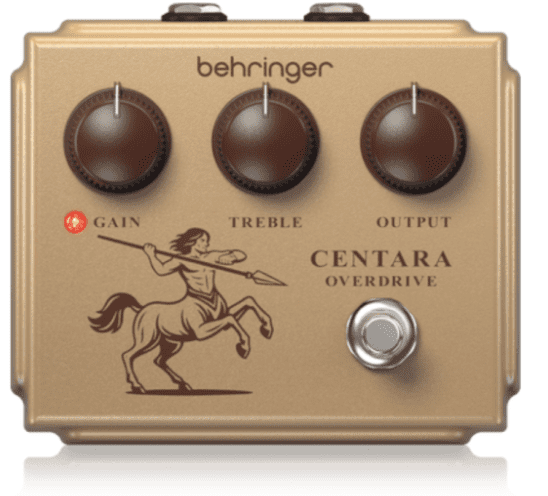Quick Context
Recently I wrote about the trademark and false endorsement case filed by Mr. Bill Finnegan against Behringer. (TL;DR … Behringer made a pedal called “Centaur” that is alleged to infringe Finnegan’s world famous Klon pedal called … “Centaur.” And those accused pedals are also alleged to have violated Finnegan’s trade dress rights and his personal rights of publicity.)
Change is a Good Thing?
Sometime around mid-June 2025, Behringer changed its CENTAUR pedal to CENTARA. Also, Behringer added BEHRINGER on the front of the pedal. Behringer also did a lot to embellish the new Centara logo itself, by adding more detail. But literally everything else about the pedal is the same (knobs, color, chassis, label, etc.).

What does this mean for the case?
- Damages might get capped to the date when Behringer changed the name from Centaur to Centara.
- This sort of change could be used to show “bad faith” to actually inflate the remaining damages claims. As the plaintiff’s attorney, I would (hypothetically) argue that this whole pedal launch was a publicity stunt for Behringer who normally cranks out knockoff pedals without much splash.
- This will make the exercise of calculating damages more annoying and more expensive for the plaintiff’s team because you’ll have to distinguish between the Behringer Centaur and the Centara.
- As I stated in my first post, I think Behringer has a meritorious claim that Finngean abandoned the Centaur logo, thus limiting the case to trade dress and trademark infringement of the name itself. If Behringer wins on this argument, then damages will be very limited!
- Behringer’s Centaur v1 is probably going to fetch a higher price on the retail and the secondary markets. Ironically, that higher price and the name-change will make it a collector’s item just like the original KLON CENTAUR itself. This will assist Finnegan in making his likelihood of confusion case because it will make the markets for these two pedals that much closer together.
Monday Morning Quarterbacking for Finnegan (lessons learned so far)
- Think about design patents. A design patent could have protected the outer raised “lip edges” on the pedal. This would have been another argument to raise against Behringer.
- Branding consistency is key! Finnegan should have kept the centaur logo on the pedal. This would have made Behringer’s defense much more difficult and would have strengthened the brand.
- Register the gold trade dress. Because the gold pedal color was not registered as trade dress, Finnegan will have to prove in court that it “acquired distinctiveness” to the purchasing public. This typically requires a survey, but not necessarily.
This case is still active, so stay tuned!





